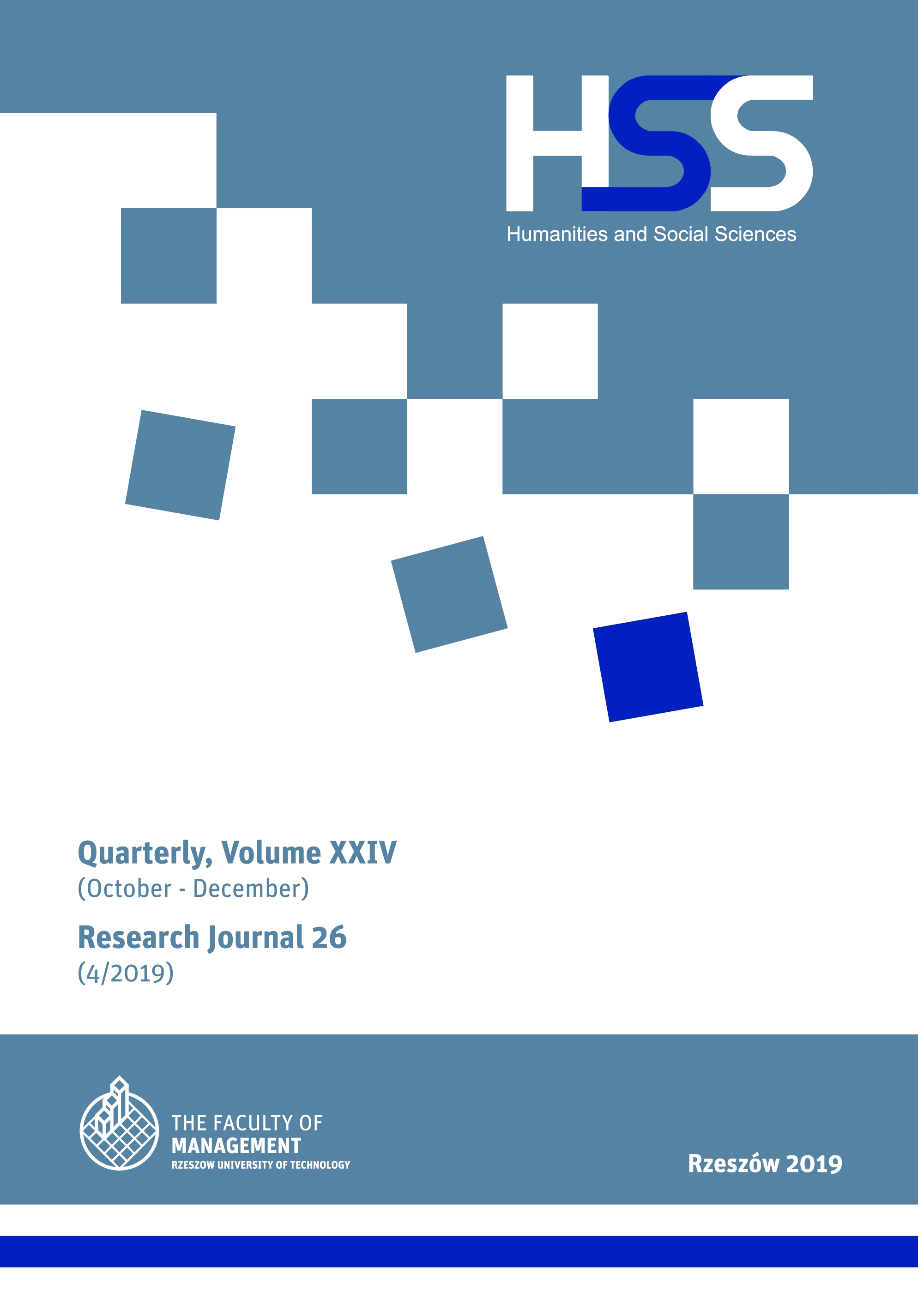Abstract
Modern enterprises run their activities in an innovative environment. The use of modern technologies is, therefore, becoming a prerequisite for maintaining the current market position and ensuring competitiveness with other entities. However, the use of innovative IT solutions creates the risk that certain disturbances in the functioning of computer programs or the occurrence of cyber attacks will bring losses to the company, thus negatively affecting financial results. Materialisation of cyber risk may also have a negative impact on the company's image and, consequently, a potential decrease in sales of goods. Therefore, a proper assessment and management of cyber risk in modern enterprises is important. One of the methods to manage this risk is cyber insurance. A large number of cyber attacks and the development of new technologies has resulted in enterprises using cyber insurance, as evidenced by the significant increase in gross written premium in recent years. The research conducted by various institutions forecasts a dynamic growth of cybernetic insurance premiums in the coming years, suggesting that cyber insurance will grow in popularity.
The purpose of the article is to present the necessary conditions and risks for the functioning of innovative enterprises in the current economic environment. In addition, the article analyses the occurrence of individual risks in business operations and their financial effects. The research also presents a scale in the use of cyber security in managing cybernetic risk of enterprises and provides future development directions of cyber security products. The research utilised methods of analysis and synthesis of secondary data in formulating conditions.
References
Aon (2018). Cyber Insurance Market Insights – Q3 2018. (http://aoninsights.com.au)
Brockett, P.L., Golden, L.L., Wolman, W. (2012). Enterprise Cyber Risk Management [In:] Emblemsvag, J., ed, Risk Management for the Future – Theory and Cases, InTech.
CHUBB. Cyber Risk Management. Guide for Brokers (https://www.chubb.com)
Colivicchi, I., Vignaroli, R. (2019). Forecasting the Impact of Information Security Breaches on Stock Market Returns and VaR Backtest. “Journal of Mathematical Finance”, 9. DOI: 10.4236/jmf.2019.93024.
Craigen, D., Diakun-Thibault, N., Purse, R. (2014). Defining Cybersecurity. “Technology Innovation Management Review”, 4(10). DOI: 10.22215/timreview/835.
Dankiewicz, R. (2018), A phenomenon of corporate bankruptcy in Poland directions and causes of changes [in:] Majerova, I., ed., Proceedings of 16th International Conference Economic Policy in the European Union Member Countries, Karvina, Silesian University.
Dreyer, P., Jones, T., Klima, K., Oberholtzer, J., Strong, A., Welburn, J.W., Winkelman, Z. (2018). Estimating the Global Cost of Cyber Risk: Methodology and Examples. Santa Monica, CA: RAND Corporation.
EIOPA (2018). Understanding Cyber Insurance – A Structured Dialogue with Insurance Companies. Luxembourg: Publications Office of the European Union.
Gordon, L.A., Loeb, M.P., Lucyshyn, W., Zhou, L. (2015). Increasing cybersecurity investments in private sector firms. “Journal of Cybersecurity”, 1(1). DOI: 10.1093/cybsec/tyv011.
IIROC (2015). Cybersecurity Best Practices Guide For IIROC Dealer Members. https://www.iiroc.ca/industry/Documents/CybersecurityBestPracticesGuide_en.pdf.
Kammoun, N., Bounfour, A., Özaygen, A., Dieye, R. (2019). Financial market reaction to cyberattacks. “Cogent Economics & Finance”, 7 : 1645584. DOI: 10.1080/23322039.2019.1645584
Khalili, M.M., Naghizadeh, P., Liu, M. (2017). Designing Cyber Insurance Policies: Mitigating Moral Hazard Through SecurityPre-Screening. In L. Duan, A. Sanjab, H. Li, X. Chen, D. Materassi, R. Elazouzi (Eds.), Game Theory for Networks, Springer. DOI: https://doi.org/10.1007/978-3-319-67540-4.
Kos-Łabędowicz, J. (2013). Influence of Modern Technologies on Internationalization of Small and Medium Enterprises. “Information Systems in Management”, Vol. 2 (1).
Kubik, K. (2012). Współczesne przedsiębiorstwa wobec wyzwań globalnej konkurencji. “Zeszyty Naukowe Uniwersytetu Przyrodniczo-Humanistycznego w Siedlcach. Administracja i Zarządzanie”, No. 19 (92).
Machová, R., Huszárik, E.S., Šimonová, M. (2016). Selected aspects of innovation policy for small and medium sized enterprises. “Journal of International Studies”, Vol. 9, No 2. DOI: 10.14254/2071-8330.2016/9-2/17.
Marsh (2019). 2019 Global Cyber Risk Perception Survey. Marsh LLC.
Martinelli, F., Uuganbayar, G., Yautsiukhin, A. (2018). Optimal Security Configuration for Cyber Insurance [In:] Janczewski, L.J., Kutyłowski, M., eds., ICT Systems Security and Privacy Protection, Springer. DOI: 10.1007/978-3-319-99828-2.
Meland, P.H., Tøndel, I.A., Moe, M., Seehusen, F. (2017). Facing Uncertainty in Cyber Insurance Policies [In:] Livraga, G., Mitchell, Ch., eds., Security and Trust Management, Springer. DOI 10.1007/978-3-319-68063-7.
Naylor, M. (2017). Insurance Transformed: Technological Disruption. Palgrave Macmillan. DOI 10.1007/978-3-319-63835-5.
Ostrowska-Dankiewicz, A. (2019), Consumer protection policy in the Polish life insurance market in the aspect of current legal regulations. “Investment Management and Financial Innovations”, Vol. 16, Issue 4. DOI: 10.21511/imfi.16(4).2019.15
Pomykalski, A., Blażlak, R. (2014). Współczesne tendencje zarządzania organizacjami poprzez innowacje. “Studia Ekonomiczn Uniwersytet Ekonomiczny w Katowicach”, No. 183.
Public Safety Canada (2016). Fundamentals of Cyber Security for Canada’s Critical Infrastructure Community. https://www.publicsafety.gc.ca/cnt/rsrcs/pblctns/2016-fndmntls-cybr-scrty-cmmnty/2016-fndmntls-cybr-Scrty-cmmnty-en.pdf.
Puto, A. (2017). Cele rozwojowe współczesnych przedsiębiorstw – wyniki badań własnych. “Handel Wewnętrzny”, No. 3 (1).
Refsdal, A., Solhaug, B., Stølen, K. (2015). Cyber-Risk Management, Springer. DOI 10.1007/978-3-319-23570-7.
Romanosky, S. (2016). Examining the costs and causes of cyber incidents. “Journal of Cybersecurity”, Vol. 2 (2). DOI: 10.1093/cybsec/tyw001.
Shettya, S., McShanea, M., Zhangb, L., Kesanb, J.P., Kamhouac, C.A., Kwiatc, K., Njillac, L.L. (2018). Reducing Informational Disadvantages to Improve Cyber Risk Management. “The Geneva Papers”, 43.
Strupczewski, G. (2017a). Ryzyko cybernetyczne jako wyzwanie dla branży ubezpieczeń w Polsce i na świecie. “FINANSE Czasopismo Komitetu Nauk o Finansach PAN”, No. 1 (10).
—— (2017b). Zagrożenia cybernetyczne instytucji finansowych. “Journal of Insurance, Financial Markets and Consumer Protection”, No. 2 (24).
Wierzbicka, E. (2017). Rola ubezpieczeń w zarządzaniu ryzykiem przedsiębiorstwa. “Zeszyty Naukowe Wyższej Szkoły Humanitas. Zarządzanie”, No 4.


